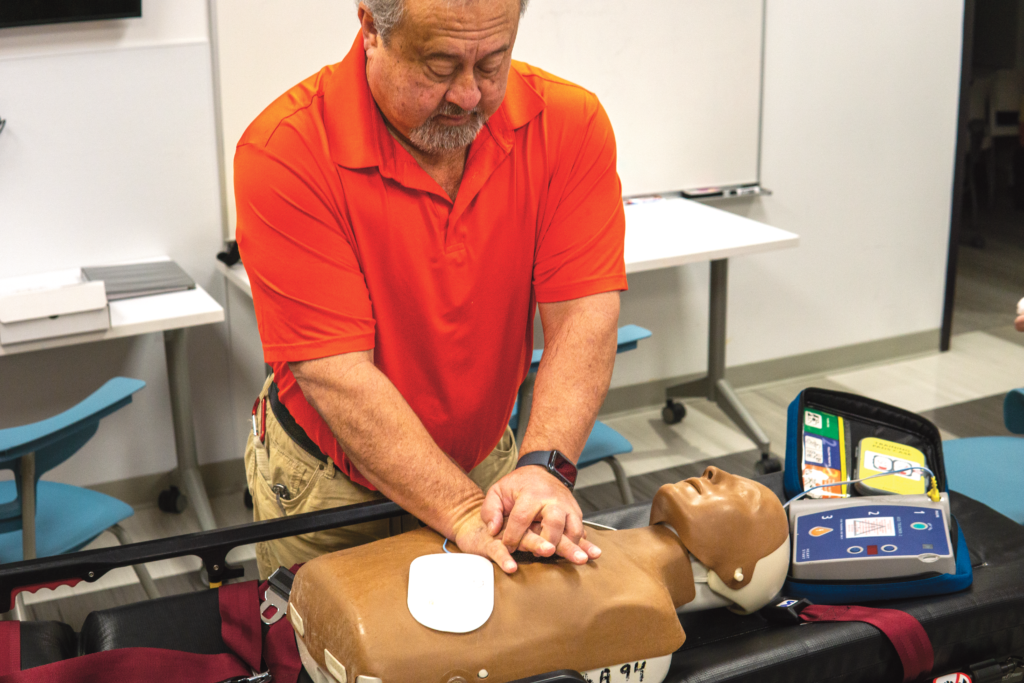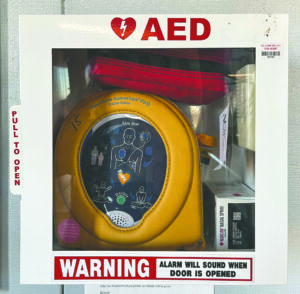
By Victor Freeman
The Scene staff
White metal boxes with glass fronts that look like fire extinguishers have popped up all over campus in the past two months.
A closer look reveals that they actually contain “automated external defibrillators,” also known as AEDs, and other medical supplies used to save lives.
St. Louis Community College spent $110,000 to buy 80 of the boxes, which are being installed on all of its four campuses, according to officials.
“Absolutely, one person saved from cardiac arrest is worth it,” said Scott Mullens, assistant professor in emergency medical services at Forest Park.
Anyone can open the boxes in emergency situations, such as a student or employee going into cardiac arrest. The defibrillators have written instructions and diagrams, as well as sensors and automated verbal instructions.
The American Red Cross describes AEDs as “easy-to-use medical devices that can analyze the heart’s rhythm and, if necessary, deliver an electrical shock.”
Forest Park has had medical-supply boxes on campus for years, according to Brad Ziegler, STLCC environmental health and safety manager.
“They weren’t visible,” he said. “There was a hodgepodge of things in them. So (getting the new ones) is more about standardizing them.”

Forest Park now has 33 of the boxes, including one on each floor of each building and wing.
Funeral service education major Anya Spurgon, 19, was happy to hear the boxes had been installed and wishes that more people knew how to use them. She has a heart condition.
General transfer studies student Gretchen Vander Pluym, 20, thinks the boxes are a good idea, but she admits that she would be intimidated if she ever had to use a defibrillator.
“I’m not the type of person who checks all the exits and sees where all the first-aid kits are when I enter a room,” she said. “I know people like that. But when I do see them, I’d like to know what’s on the inside.”
The boxes at Forest Park also contain Stop the Bleed kits and Narcan, a brand of naxolone, a medication designed to rapidly reverse overdose of fentanyl, heroin and other opioids.
Stop the Bleed kits consist of tourniquets, gauze and other supplies that can be used when victims are bleeding.
People should first apply pressure to a wound with gauze, then tie a tourniquet if it’s on a limb, according to Assistant Professor Steve Newcomb, who teaches in the emergency medical services program at Forest Park.
“Don’t remove the tourniquet,” he said. “Once you release the tourniquet, there are toxins that it is creating because of the pressure that could circulate into the body.”
Using a defibrillator is considered a basic skill in the EMS program. Students practice on mannequins in a laboratory at the Center for Nursing and Health Sciences.
“The students need to determine whether or not (a patient is) in cardiac arrest,” Newcomb said. “As soon as you determine that he has no response … you go call 911, and you go get an AED, if there’s one available.
“If you’re not seeing any signs of life, start CPR, because it’s better to do something than to do nothing.”
